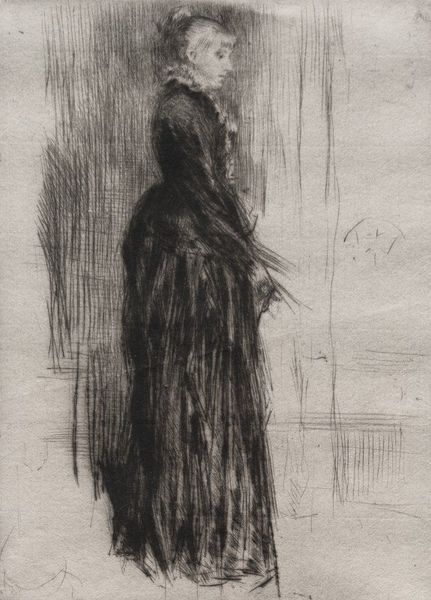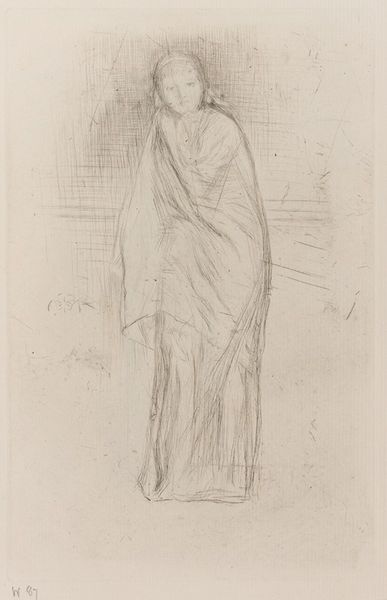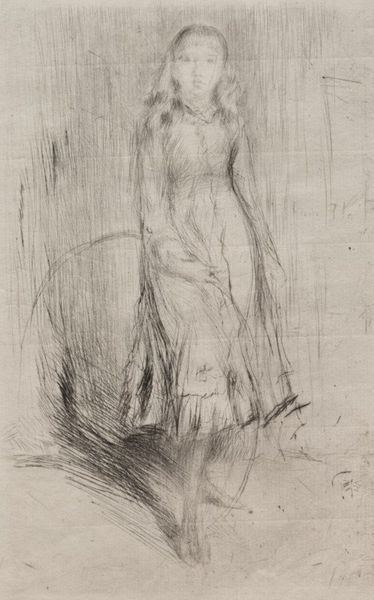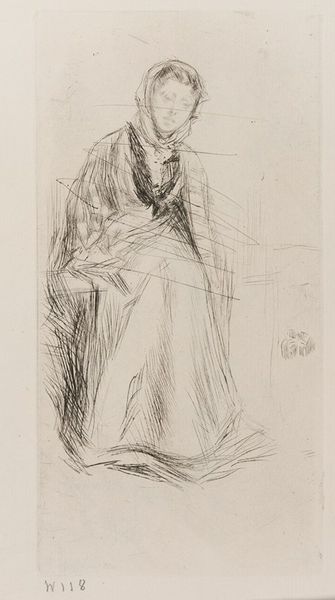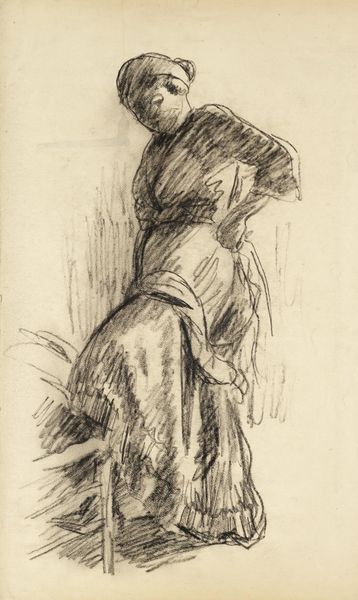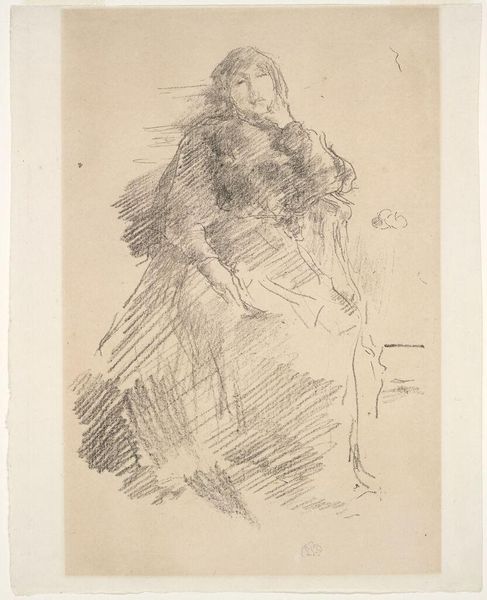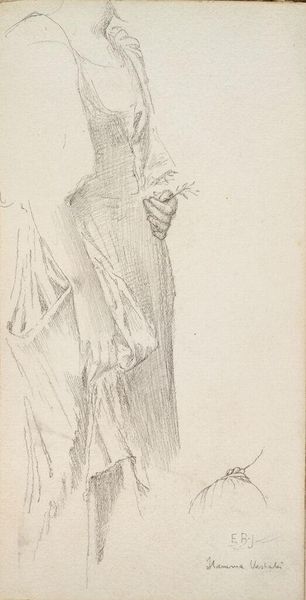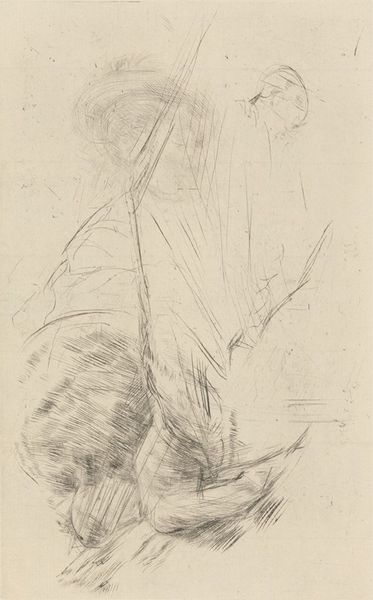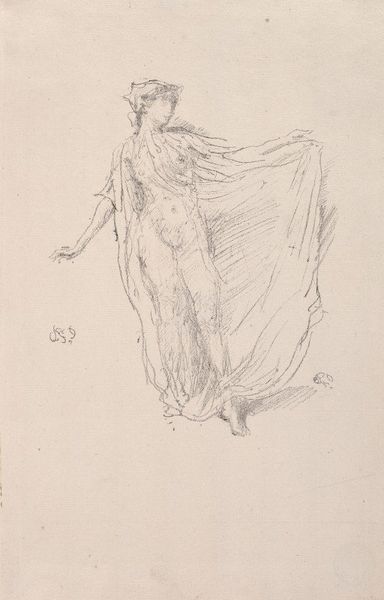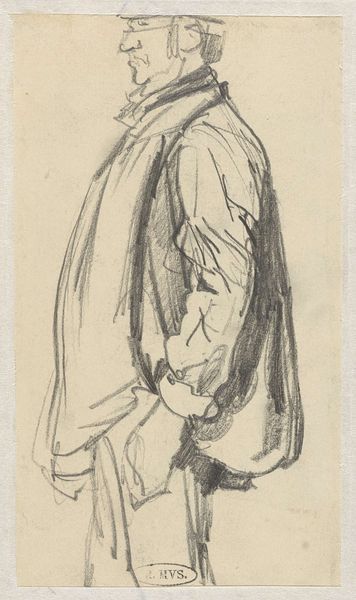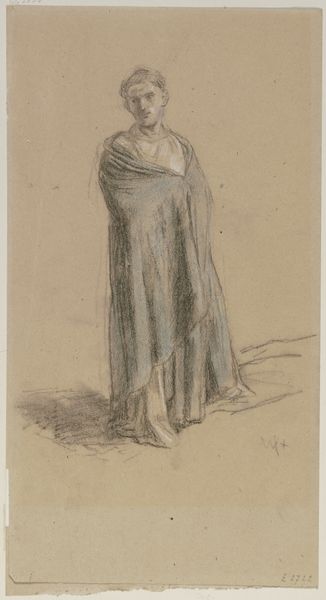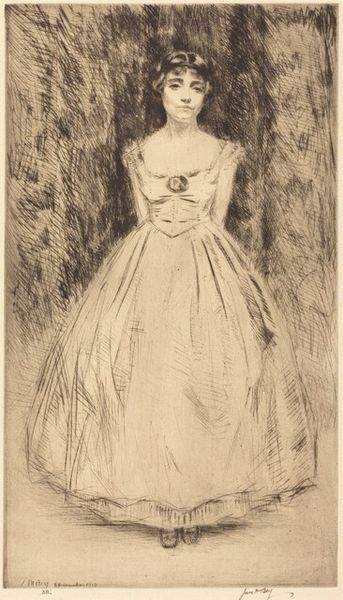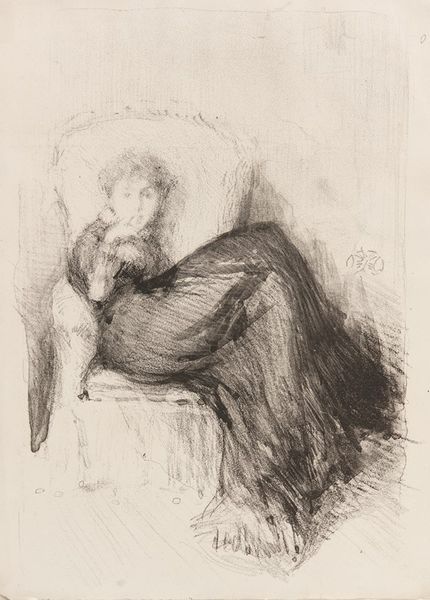
Copyright: Public Domain: Artvee
Curator: Ah, look at this ghost story rendered in ink. There’s a lightness to this rendering of what seems like such a sturdy subject. Editor: Yes, that ethereal quality hits me first. The stark contrast with the heaviness one might expect from the titular velvet is remarkable. Is it sadness, is it just waiting? There's something… spectral. Curator: Indeed. What we have here is "The Little Velvet Dress", an etching and drypoint print by James Abbott McNeill Whistler, completed around 1873. Whistler, you know, danced with shadows beautifully. Editor: Shadows are right! It's all about line and suggestion, isn’t it? The dress almost seems to vibrate, there is only so much tonal control; it teeters on being incomplete but captures something real. It avoids solidity completely, it’s only a whisper of form. Curator: Whistler was a master of suggestion; form dissolving rather than asserting. The texture created through etching conveys the sheen of the velvet. I imagine he used the drypoint to give it a certain softness and that aura you’re sensing. He wanted us to *feel* the dress as much as see it. It's not about pure realism; it’s about evoking an atmosphere, a mood. The dress almost becomes a character in its own right, a silent witness to some unspoken story. Editor: You're right about the storytelling aspect. I mean, it almost invites us to project our own narratives onto the figure. Like a memory, elusive but potent. There are only three hard, clear lines in the composition. Is that intentional incompleteness part of its beauty, then? That it offers up an invitation, and is also perhaps unfinished as an artifact of its historical making? Curator: That may very well be. His compositions often play with incompleteness, a deliberate ambiguity. His goal was not just to replicate visual reality, but to express something more, an inner experience, perhaps. You know, "art for art’s sake." He would’ve said something like that, probably with a little flick of the wrist. Editor: Right, I think it embodies something of that search. An aesthetic exercise with all the rigor of academic application, but none of the strict subject matter, a study more about *being* and less about likeness. What a journey he creates for the eyes! I see why he gave Baudelaire all that business. Curator: Absolutely. And isn't that the heart of art—inviting others into your vision, whether ghostly or not? Editor: Definitely haunting. In a good way.
Comments
No comments
Be the first to comment and join the conversation on the ultimate creative platform.
